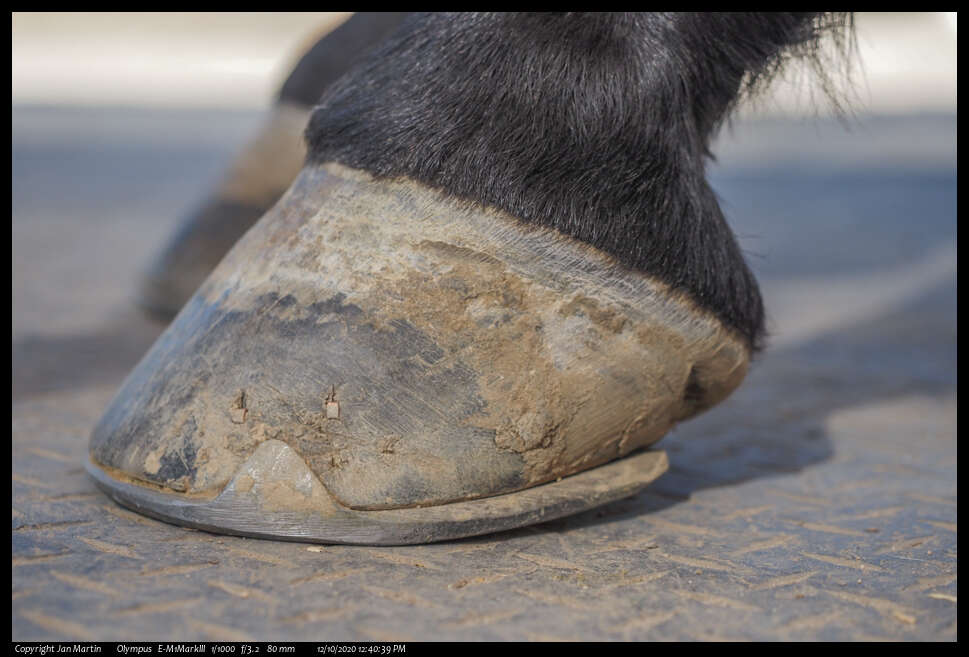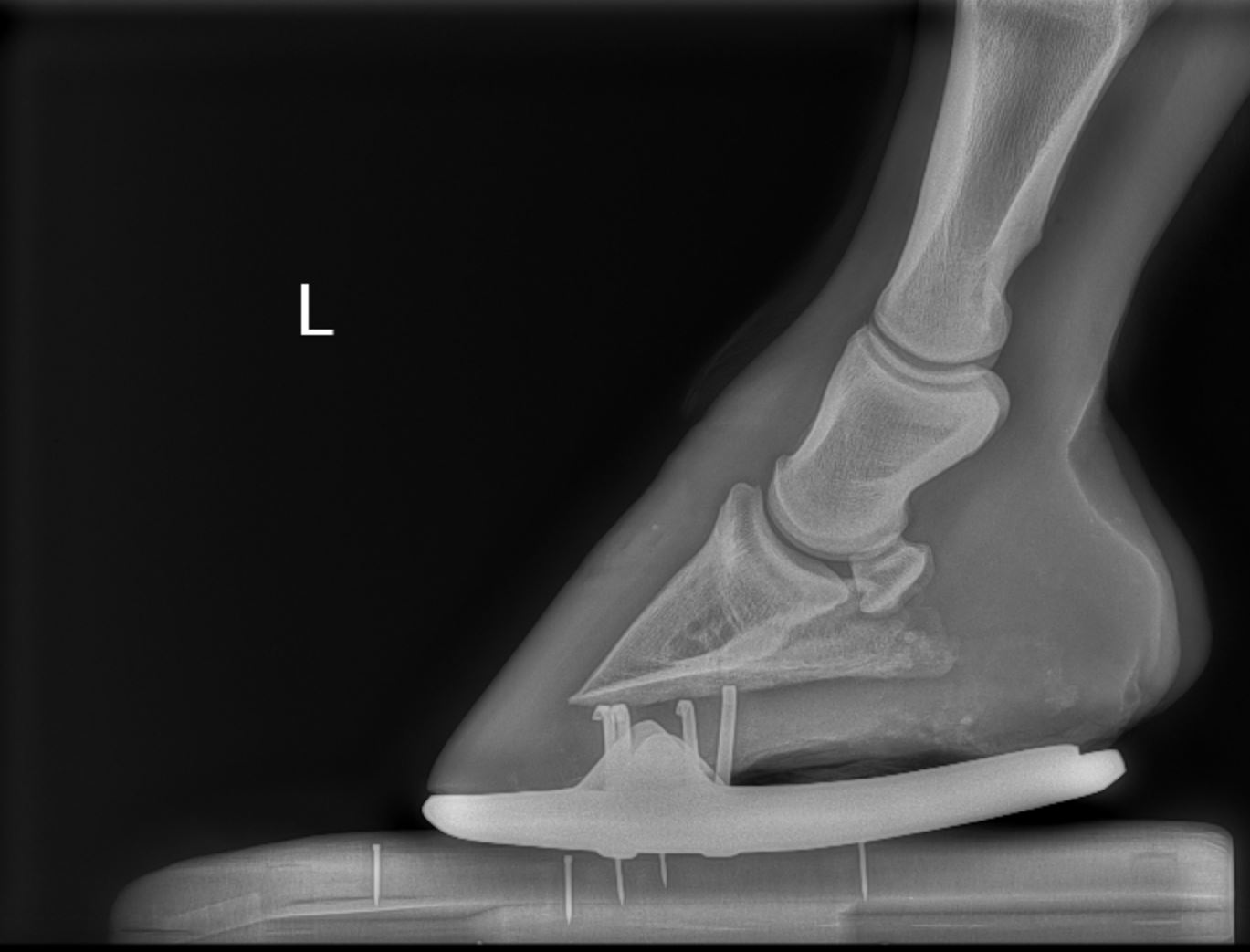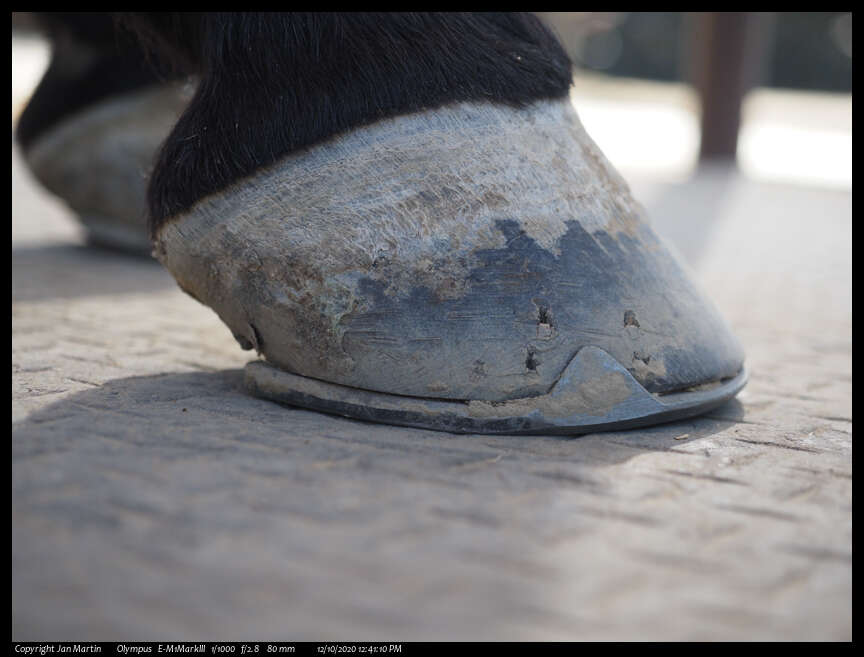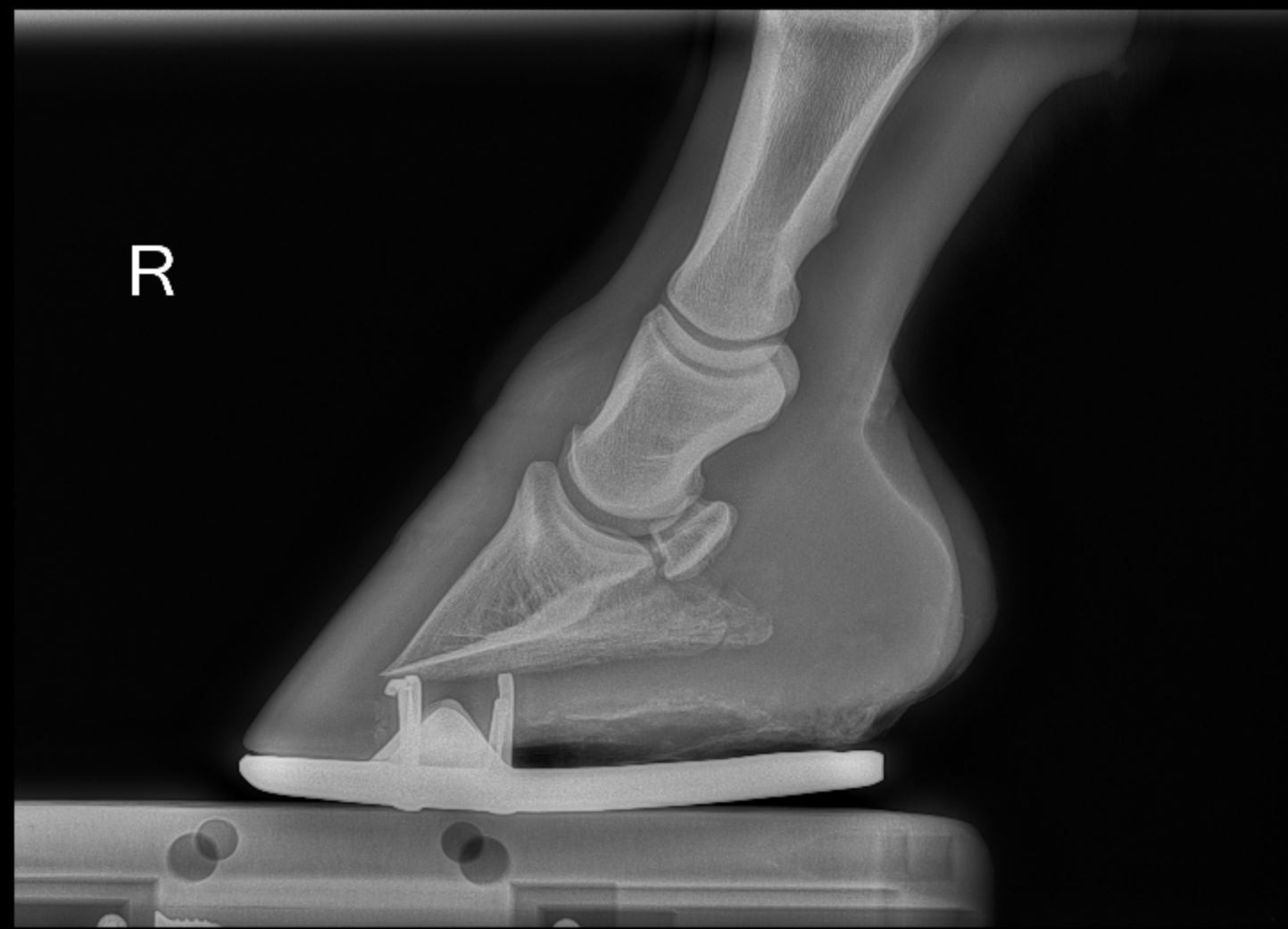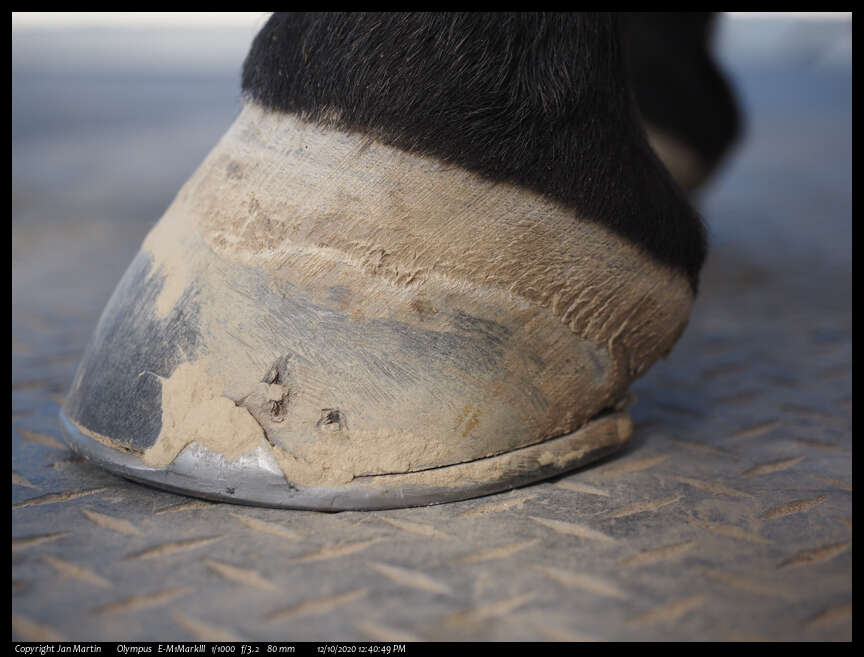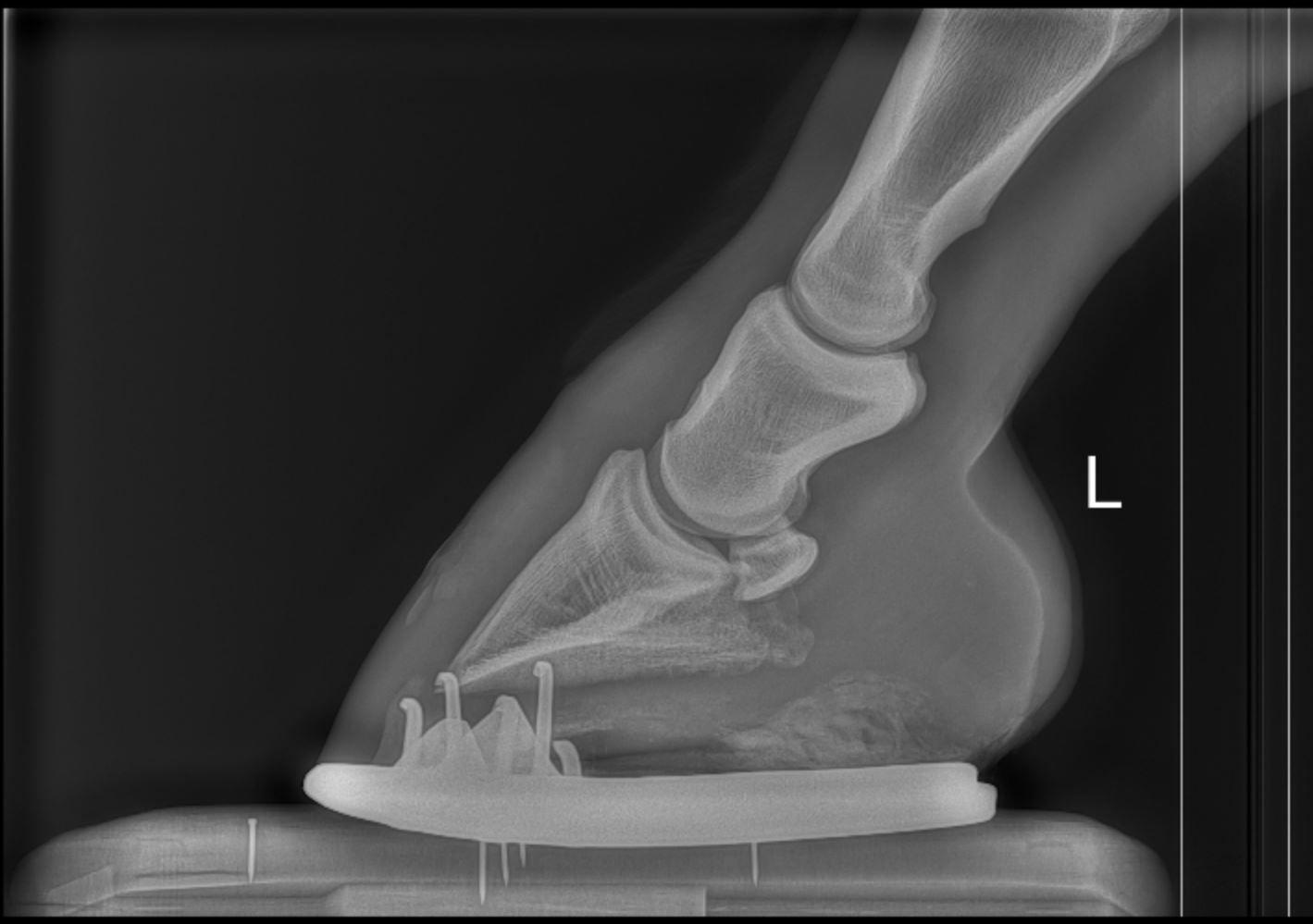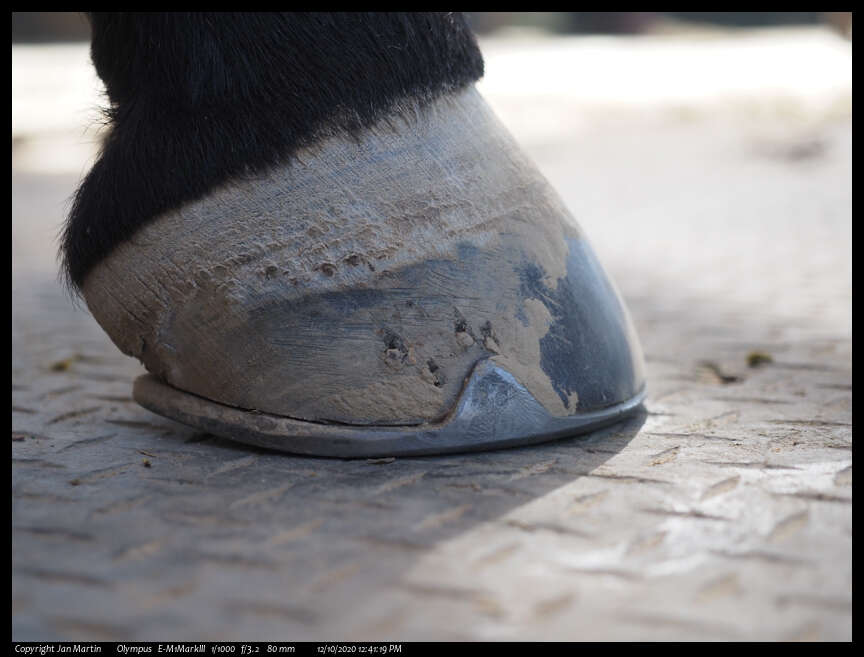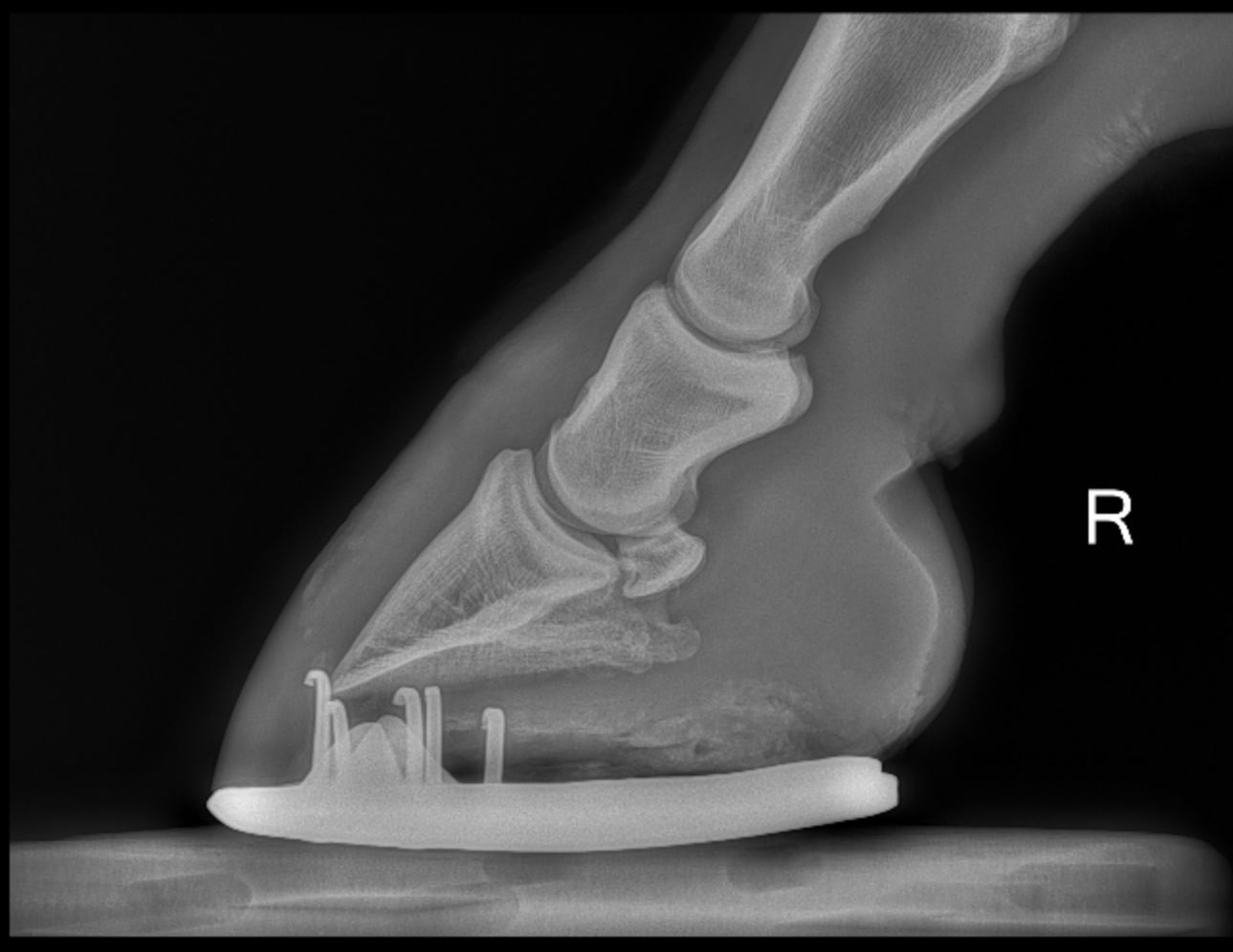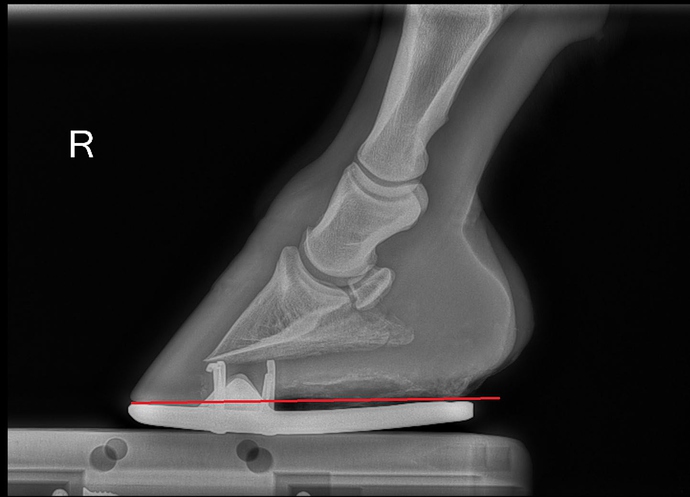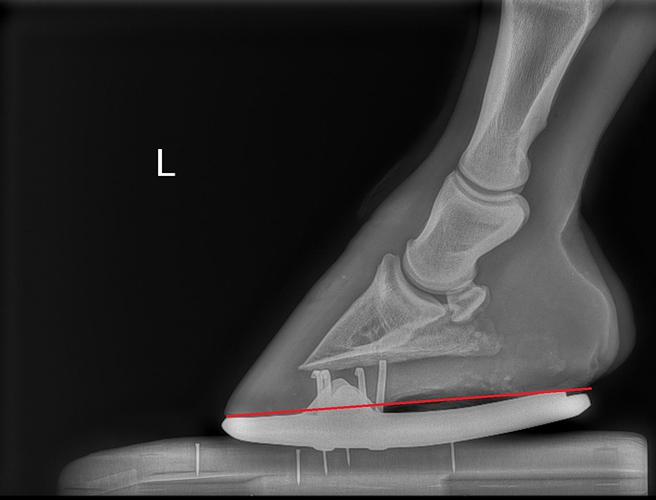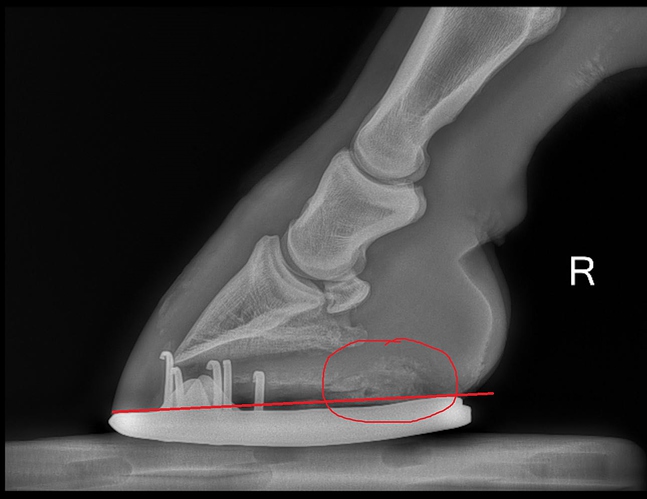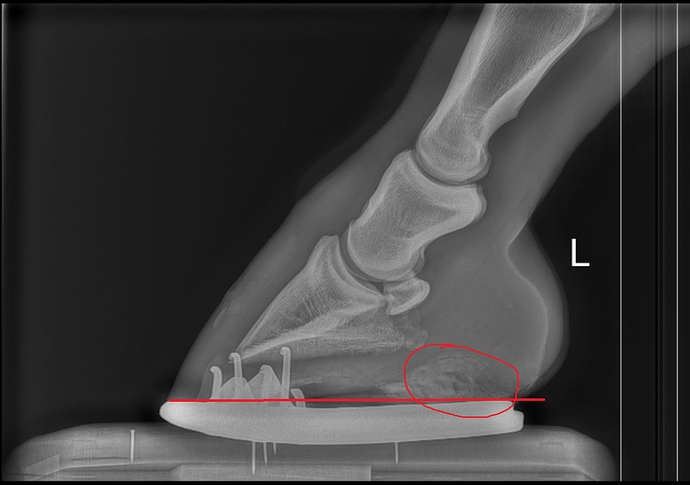Well, new farrier looked at xrays and completely disagrees with shortening the toe, and feels the breakover is just fine where it is with the belly rocker shoe. Farrier thinks that equine vets aren’t current with shoeing and keep going back to standard techniques that farriers are finding don’t work as well as newer ones, and thus discounts my vet’s opinion.
Farrier thinks the tripping and the new forging are a result of something in the hinds. Looking at the right and left hind xrays the P2 bone is “sunk” further away from the hoof wall than the coffin bone, and this leads them to believe it is a hind end issue.
I could not wrap my head around how this relates to the front end, so I can’t explain the logic any better. (And the hinds aren’t really shod any differently than they were with old farrier, so I don’t see what we are doing with the hinds to improve the fronts… arrgh)
My main concern is the tripping and forging, which seem to me to be a front end problem, but hey, I am open, and farrier is adamant.
So I asked what farrier thought would happen in the next five weeks. Their expectation was that the tripping and forging would get better. Since I expected the opposite - thinking more growth would just make it worse - it seemed like a fair experiment. If it gets worse, we change, if it stays the same or gets better, we stay.
Horse is sound, he trips about 5 times in a 40 min training ride. He trips and forges just being hand-walked, so it isn’t just happening when being worked. Trainers feel some of the tripping is because they are asking him to carry his body differently. They think the new forging is because he is loosening up, balancing better and getting a longer stride in back, and will learn to get his fronts out of the way quicker.
This farrier has a good reputation, seems up on corrective shoeing at our regional equine hospital (Alamo Pintado in SoCal). Has made significant improvements to the 20+ horses in my barn. Charges above the going rate. And they prefer to lose me as a client than to change how they have shod.
It is always tough when a vet says one thing and farrier another. I realize farrier probably knows more. I just know my horse didn’t trip and forge with former shoer.
Maybe he will be a better mover with this approach. I like being out of pads, I can see the heel cushion expanding and getting fuller – all good things that weren’t happening before. Maybe the former shoer relieved tripping but was causing a different problem with crushed heels instead.
I really appreciate everyone’s input. It was this forum that identified long toes two years ago and prompted me to move to my former farrier who shortened toe, put on pads, and tripping resolved. You guys always open my eyes.
I am just going to carefully watch and see what happens. I am glad he doesn’t have a glaring negative plantar angle in the back. Fingers crossed that the new farrier is correct and trip/forge are minor hiccups as we migrate away from pads.


